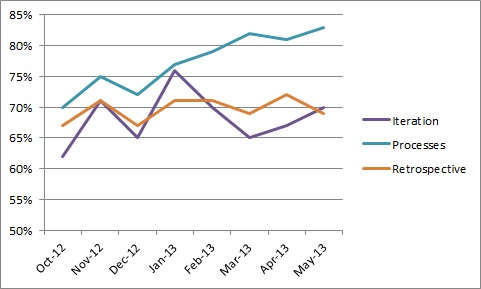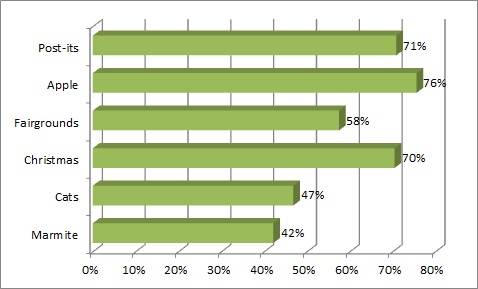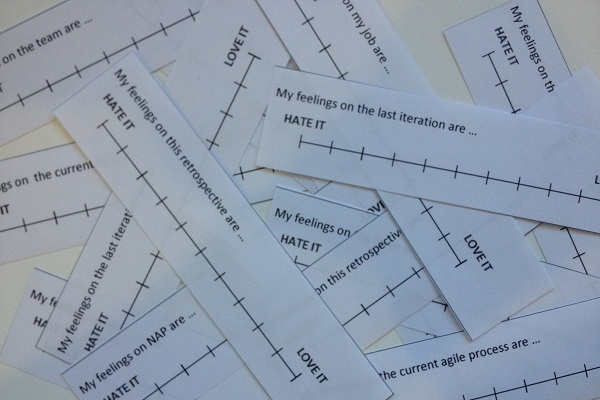If I had to keep only one team-wide meeting, it would be the retrospective. As well as being the catalyst for improvement, it is also the team’s opportunity to vent their frustration. In fact, raising issues is encouraged! Sure, the team has to go on to try to find solutions and ways to improve, but this cathartic process shouldn’t be under-appreciated.
Like a shrink, the ScrumMaster should try to draw out the real reasons for negativity as the stated cause isn’t always the root. But it’s sometimes difficult to judge overall feelings and whether grumbles are just about a specific event or issue in an iteration, or whether there are bigger issues within the team, dissatisfaction about roles or even unhappiness with the company.
How Marmite voting works
So I’m trialling something I’ve named “Marmite voting”. As well as helping with the purge of ill-feeling, it allows you to get a feeling on a variety of topics and see the change over time.
The process is simple:
- Decide which topics you’d like to monitor
- Print out voting slips for each topic (with a sliding scale from 0 (hate) to 10 (love)
- Hand out the slips at the start of the retro (one of each slip to each person)
- People anonymously mark an ‘X’ on their slips then return them to a central repository (I just use a big brown envelope)
For example, I get the entire team (so devs, testers, BA, Product Owner, architects, me) to vote on how they feel about:
- The Company
- Their job
- The team
- The last iteration (or stories since the last retro for the team using Kanban)
- This retrospective (obviously I only hand out this slip at the end of the retro though)
- … plus a fun topic (see image at the bottom of the post)

Even though the votes are anonymous, it still gives you enough to know whether fluctuations are just a one-off, just one person or a general feeling. For example, if you have a particularly unhappy retrospective, you will know whether this is only iteration-deep or whether it has affected the team’s view on their job/team/company. You’ll also be able to judge how successful different retrospective styles are: if you consistently notice dips in happiness when you do retros like “the sailboat”, then you may want to steer clear of the more playful retro styles.
It’s still relatively early days, but I think it has value. As with all stats, you need to analyse them carefully, taking into account the change of team members, seasonal fluctuations, and other external factors.


Pingback: Scrum & Kanban – The best retro of 2013